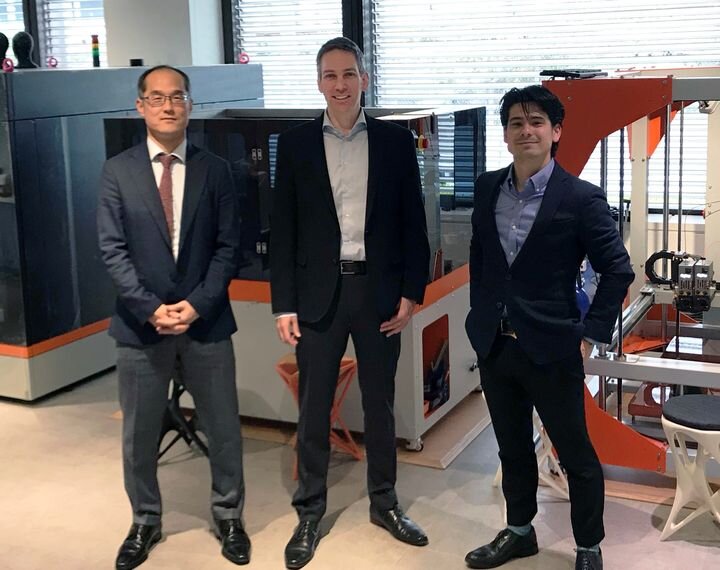![Executives from PostProcess Technologies and C. Illies celebrate expansion to Japan [Source: Post Process Technologies]](https://fabbaloo.com/wp-content/uploads/2020/05/image-asset_img_5eb08bd2c5636.jpg)
Why do I say so? It seems that the companies offering post-processing technology solutions are popping up much more frequently in our radar. Today, for example, we received a notice from PostProcess Technologies that they had set up a relationship with a Japanese reseller to market their products in that country. It seems to be the first foray into Asia by the US manufacturer.
The other reason for this hypothesis is that at recent trade shows we’ve seen a much larger array of post-processing technology vendors, and if you’re a regular Fabbaloo reader you will have seen some reports on them, like Quill Vogue, Pulvermeister, AMT, DyeMansion and of course, PostProcess Technologies.
What Is 3D Print Post-Processing?
Post-processing is the surprise “extra work” required for truly completing a 3D print job. While the 3D printer merrily produces the object, the job is definitely not done when it’s removed from the 3D printer. It could be required to undergo a number of possible post-processing treatments, including:
-
Removing support material
-
Smoothing surfaces
-
Texturing surfaces
-
Polishing
-
Color dyeing
-
Painting
-
Assembly
Automating Post-Processing
All of these have long been manual processes and have made a wreck of early additive manufacturing business models due to the requirement for human labor. Humans tend to be expensive and they can be inconsistent in performance, particularly when there are more than one individual involved.
With the increased interest in production using additive manufacturing technologies, the demand for precision part finishing is increasing, and the vendors are meeting that challenge. Parts need to be highly consistent in all aspects.
This is particularly true for coloration, where slight variations in colouring from batch to batch are visually evident. That’s one of the reasons the post-processing vendors are increasingly moving towards “smart” solutions where consistency can be more-or-less guaranteed through automation.
Post-Processing Trends
What can we expect to see with post-processing technologies in the future?
I’m expecting to see increasingly automated systems that provide even more consistency, particularly with large quantities of parts. We may also see an increase in the capacity of post-processing equipment as manufacturers gradually increase their production unit counts.

